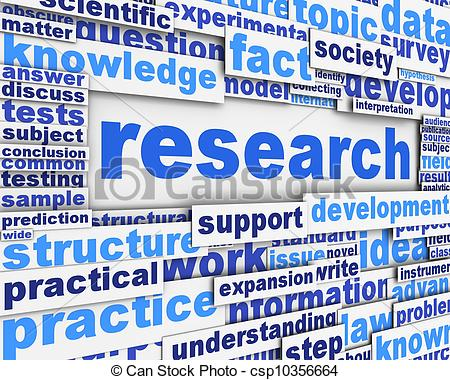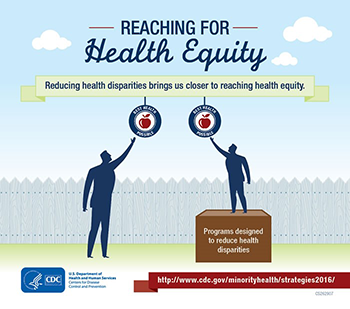Home > The Art of “Looking It Up” - Online Health Equity and Inclusion Prevention Resources
By Cele Fichter-DeSando, MPM
The Art of “Looking It Up” - Online Health Equity and Inclusion Prevention Resources
In 1966, a World Book Encyclopedia sales representative visited my 5th-grade class. We were given a booklet with random knowledge questions such as “Is the tomato a fruit or a vegetable?” and “What was Samuel Clemens pen name?” We were allowed to use class time to go to the school library and were instructed to look up the answers in the encyclopedias. I used the school’s references and asked my older brothers and sisters for help as well. Whenever I found an answer, I shared my newfound knowledge with anyone willing to listen. Once the booklet was completed, we turned it in and received a certificate announcing we were members of the “Look it Up Club” and a metal pin with the slogan “We Never Guess, We Look it Up”
Samuel Clemens pen name?” We were allowed to use class time to go to the school library and were instructed to look up the answers in the encyclopedias. I used the school’s references and asked my older brothers and sisters for help as well. Whenever I found an answer, I shared my newfound knowledge with anyone willing to listen. Once the booklet was completed, we turned it in and received a certificate announcing we were members of the “Look it Up Club” and a metal pin with the slogan “We Never Guess, We Look it Up”
 The 5th grade was more than 50 years ago, you can purchase the “vintage” pin on eBay, and my family members still laughingly refer to the “We Never Guess” motto whenever we need an answer to a question. Even though I didn’t look everything up on my own and my family didn’t purchase a new set of encyclopedias, this experience of looking for answers, researching questions, and sharing my findings has stayed with me and been an integral part of my career as a prevention practitioner. My skills and interests were not as a researcher or a scientist, my particular interest or “superpower” has been in finding the research done by others and using that knowledge for teaching or designing programs.
The 5th grade was more than 50 years ago, you can purchase the “vintage” pin on eBay, and my family members still laughingly refer to the “We Never Guess” motto whenever we need an answer to a question. Even though I didn’t look everything up on my own and my family didn’t purchase a new set of encyclopedias, this experience of looking for answers, researching questions, and sharing my findings has stayed with me and been an integral part of my career as a prevention practitioner. My skills and interests were not as a researcher or a scientist, my particular interest or “superpower” has been in finding the research done by others and using that knowledge for teaching or designing programs.
In more than 35 years of work in the prevention field, my methods for “looking it up” have changed dramatically but the need for reliable sources of information has remained constant. I am indebted to the researchers and scientists who make evidenced-based prevention work possible and grateful for advanced technology and the numerous organizations that have made a wide array of resources accessible.
The Need to Increase Health Equity
In addition to providing reliable and up to date evidenced-based information, researchers and scientists often use their research and experience to help us discern what questions we need to ask next. An emerging question in the field of prevention is how to eliminate disparities, address racism and increase health equity through prevention programming. Prevention practitioners have the drive and the desire to increase health equity and inclusion but not everyone has the interest or the time to spend valuable hours searching for the latest research findings or compiling resources necessary for implementing prevention programming. Fortunately, there are many organizations and groups that have done the “looking it up” for us and increase the ability to implement and adapt prevention programs to increase health equity.
The Society for Prevention Research
One organization of particular help for the prevention field is The Society for Prevention Research (SPR). SPR’s mission statement reads “ The Society for Prevention Research is an organization dedicated to advancing scientific investigation on the etiology and prevention of social, physical and mental health, and academic problems and on the translation of that information to promote health and well being. The multi-disciplinary membership of SPR is international and includes scientists, practitioners, advocates, administrators, and policy makers who value the conduct and dissemination of prevention science worldwide”.1
Each June, SPR holds an annual meeting to advance its vision of promoting evidenced-based programs and policies to improve health and well-being. The annual meeting is an opportunity for the exchange of new concepts, methods, and results from prevention research and related public health fields and ongoing dialogue between scientists, public policy leaders and practitioners concerning the implementation of evidenced-based preventive interventions in all areas of public health.2
This year’s meeting will be held virtually June 2-4, 2021 and the theme is “Addressing Racism and Disparities when Considering Biology and Context.” The aim of the conference is to highlight the importance of the role of prevention science within the context of a global pandemic and increased focus on public health and health equity across the world.3
In 2021, SPR will also provide training opportunities in prevention science during post-conference workshops to be scheduled during June, July, and August. Registration information and previous year conference videos and resources can be found at the SPR website https://www.preventionresearch.org/.4
Online Health Equity and Inclusion Resources
Addressing racism, decreasing disparities, and improving health equity are not intended to be one-time topics for conferences and workshops but are essential as the foundation for the ongoing work of prevention. For those of us, who have vowed “to never guess and look it up” there are many reliable resources to help guide us in our planning, communications, and programming.
The Office of Behavioral Health Equity
The Office of Behavioral Health Equity (OBHE) coordinates the Substance Abuse and Mental Health Services Administration’s (SAMHSA) efforts to reduce disparities in mental and/or substance use disorders across populations. OBHE provides resources including data on health disparities and health care quality among diverse populations, and information about health policy, cultural and linguistic competency, health literacy, and more.5

PTTC Network Healthy Equity and Inclusion Resources
The PTTC Culturally & Linguistically Appropriate Practices Working Group compiled a list of resources to support health equity and inclusion and the implementation of culturally linguistic and appropriate standards (CLAS). Topics include implicit and unconscious bias, cultural humility, population specific information, and CLAS implementation resources.6
Geographic Health Equity Alliance
The Geographic Health Equity Alliance (GHEA), an initiative of Community Anti-Drug Coalitions of America (CADCA), is a CDC funded National Network dedicated to reducing geographic health disparities related to tobacco and cancer.
GHEA defines geographic health disparities as the differences in health behaviors and health outcomes related to where people live. Scientists have found that the locations in which we live, work and play have an enormous impact on our health.
This network supports the implementation of effective public health practices in places that need them the most. They work closely with state tobacco and cancer programs and their partners to provide training and support on how to reduce health disparities and improve the health of communities across our nation.7
CDC National Center for Disease Prevention and Health Promotion

One of the primary goals of CDC’s National Center for Chronic Disease Prevention and Health Promotion (NCCDPHP) is to achieve health equity by eliminating health disparities and achieving optimal health for all Americans. NCCDPHP addresses health equity through its programs, research, tools and resources, and leadership.8 The NCCDPHP developed a Practitioner’s Guide for Advancing Health Equity that is available for download.9
 Tobacco-Free Kids Campaign for the Culture
Tobacco-Free Kids Campaign for the Culture
The Campaign for the Culture is an initiative of the Campaign for Tobacco-Free Kids focused on uniting, empowering, educating, and engaging people of color and other targeted communities around critical healthcare and human rights issues connected to tobacco use, with the goal of inspiring young community members to avoid or quit tobacco use.10 The initiative provides resources, videos and virtual events, including a video of the February 2021 cultural conversation: Intergenerational Tobacco Use and Its Cultural Impact on Black Communities.11
National Network to Eliminate Disparities in Behavioral Health
The National Network to Eliminate Disparities in Behavioral Health (NNED) is a network of community-based organizations formed with support from SAMHSA, National Institutes of Health/National Institute on Minority and Health Disparities, and the Annie E. Casey Foundation, in partnership with the National Alliance of Multi-ethnic Behavioral Health Associations (NAMBHA). NNED is focused on the mental health and substance use issues of diverse racial and ethnic communities. The NNED supports information sharing, training, and technical assistance towards the goal of promoting behavioral health equity, and identifies and links “pockets of excellence” in reducing disparities and promoting behavioral health equity. It strives to avoid the tendency to “reinvent the wheel.”12
Author's Note
Cele Fichter-DeSando, MPM (She, Her) is a consultant and trainer in substance use and gambling prevention and tobacco prevention and control. Cele has a Master’s degree in Public Management from Carnegie Mellon University and more than 35 years of experience in the management, training, and implementation of research-based prevention programs in Pittsburgh Pennsylvania. In 2020, Cele started a certified woman-owned business, CFD Consulting LLC, and has provided consulting for numerous organizations including Tobacco-Free Allegheny, the PTTC Network, and the Danya Institute Central East ATTC. She is passionate about providing resources, materials, and practical applications for evidenced-based prevention programs and prevention science to prevention practitioners.
Cele Fichter-DeSando, MPM
CFD Consulting, LLC
[email protected]
412-580-3089
References
6Prevention Technology Transfer Center Network. (2021). Building Health Equity and Inclusion. (Updated 03/15/2021)
Retrieved from https://pttcnetwork.org/centers/global-pttc/cultural-responsiveness.
8,9CDC. (2021). A Practitioner's Guide for Advancing Health Equity. (2016).
Retrieved from https://www.cdc.gov/nccdphp/dch/pdf/healthequityguide.pdf
7Community Anti-Drug Coalitions of America (2021). Geographic Health Equity Alliance. (2021).
Retrieved from https://www.cadca.org/campaigns/geographic-health-equity-alliance
12National Network to Eliminate Disparities in Behavioral Health. (2021). NNED Share Resources. (03/18/2021).
Retrieved from https://nned.net/resources/
1,2,3,4Society for Prevention Research. (2021). Annual Meeting: Addressing Racism and Disparities When Considering Biology and Context.
Retrieved from https://www.preventionresearch.org/
5Substance Abuse and Mental Health Services Administration. (2021) Office of Behavioral Health Equity Resources. (Updated 04/26/21).
Retrieved from https://www.samhsa.gov/behavioral-health-equity/resources
10,11Tobacco Free Kids. Campaign for the Culture. (2021).
Retrieved from https://www.tobaccofreekids.org/campaign-for-the-culture